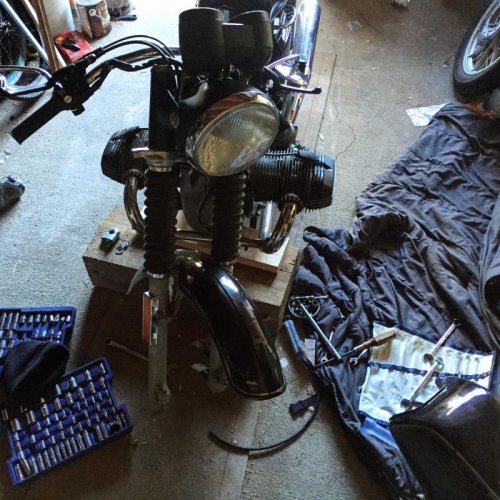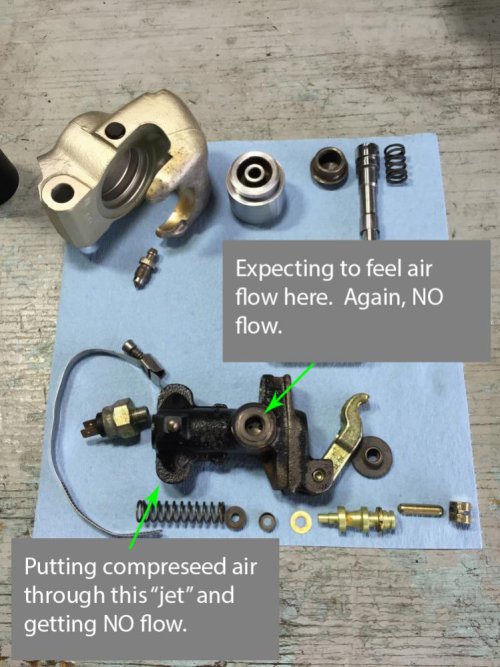Restoring my Dad's old 1978 R100/7. Sat garaged for over 20 years. Front brake caliper seized in storage. I drained the oil (2 years ago) out of the front caliper in order to transport the bike.

Actively working on the bike now.

Rebuilt the front caliper. Bought a new brake line. Rebuilt the master cylinder. Bled the brakes, and still have the same problem I started with: front brake caliper is seized/ won't release. After some sleuthing with compressed air, I believe the culprit is the following master cylinder jet:

Bought a guitar string (high-E) to run through this passageway next week and see if that helps. Wanted to check here first to make sure that fluid (compressed air test) is SUPPOSED to flow that direction.
Other info that supports my suspicion of this pathway: filled the reservoir with brake fluid, repeatedly pumped the handbrake (hard) to push fluid down the line. Fluid eventually arrived, so I know the pathway is allowing flow that direction (from reservoir to caliper). Next, tried the reverse, pushing fluid with a syringe and tubing from the caliper to the reservoir: nothing doing. Friend pushed so hard the tube popped off the plunger and sprayed brake fluid everywhere. That's what led us to investigating with the compressed air, and eventually, suspecting this one pathway.
Thoughts? Thanks everyone.

Actively working on the bike now.

Rebuilt the front caliper. Bought a new brake line. Rebuilt the master cylinder. Bled the brakes, and still have the same problem I started with: front brake caliper is seized/ won't release. After some sleuthing with compressed air, I believe the culprit is the following master cylinder jet:

Bought a guitar string (high-E) to run through this passageway next week and see if that helps. Wanted to check here first to make sure that fluid (compressed air test) is SUPPOSED to flow that direction.
Other info that supports my suspicion of this pathway: filled the reservoir with brake fluid, repeatedly pumped the handbrake (hard) to push fluid down the line. Fluid eventually arrived, so I know the pathway is allowing flow that direction (from reservoir to caliper). Next, tried the reverse, pushing fluid with a syringe and tubing from the caliper to the reservoir: nothing doing. Friend pushed so hard the tube popped off the plunger and sprayed brake fluid everywhere. That's what led us to investigating with the compressed air, and eventually, suspecting this one pathway.
Thoughts? Thanks everyone.
